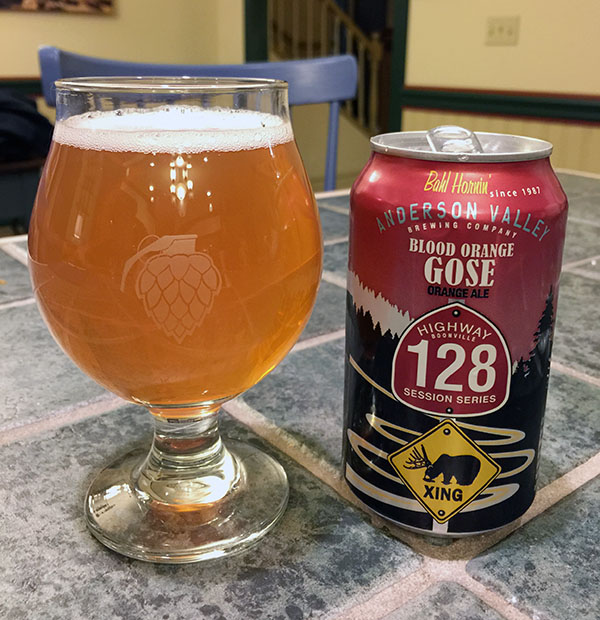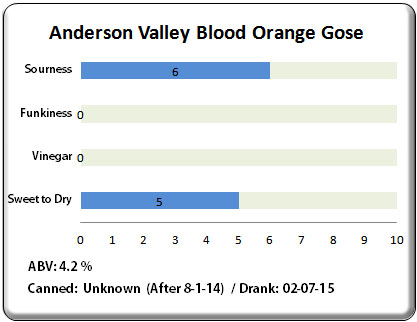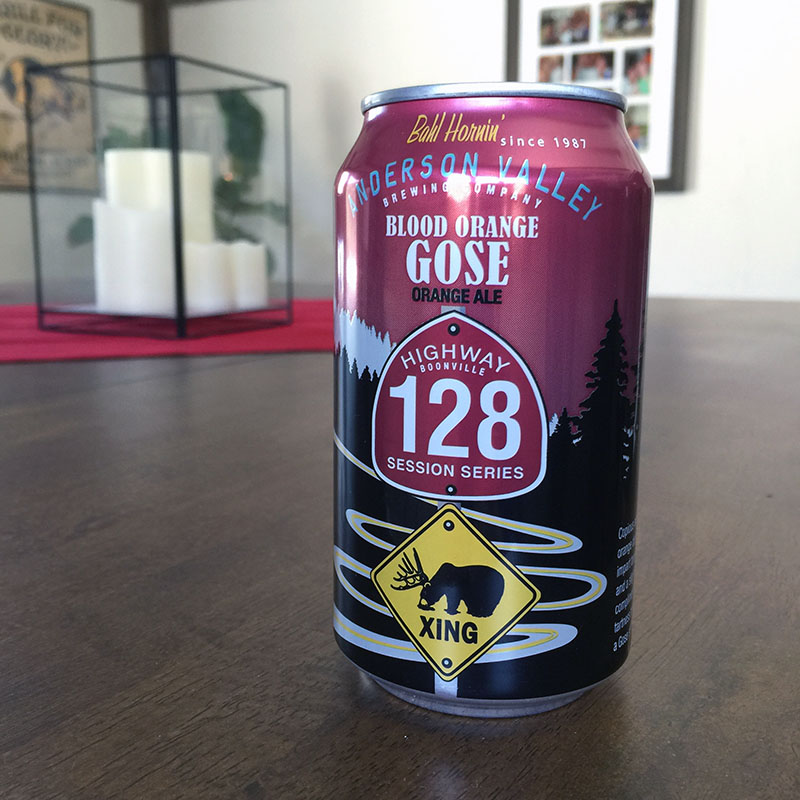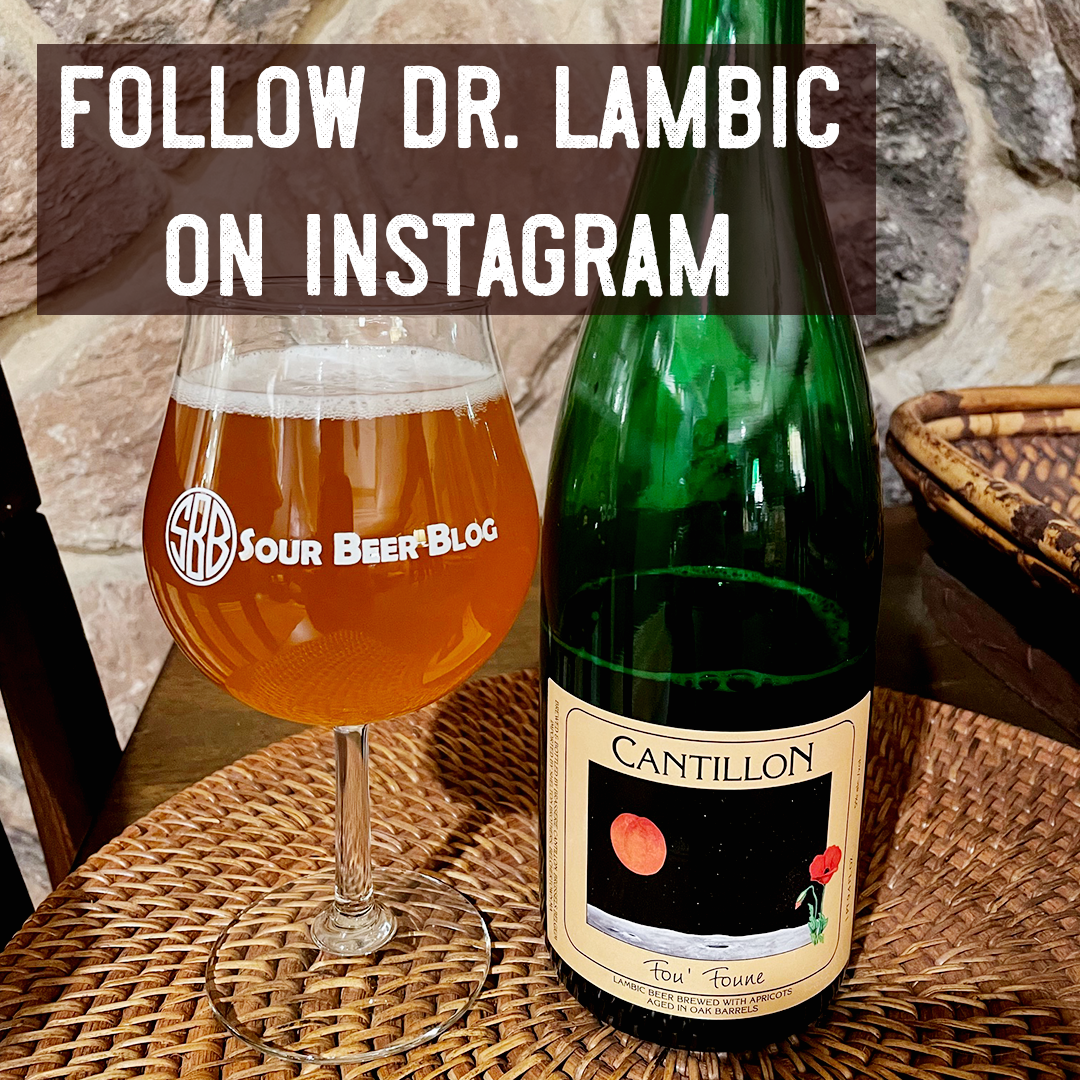Hello Sour Beer Friends!
Over the past year, more creative American craft breweries have begun experimenting with the classic German sour beer styles of Gose and Berliner Weisse than ever before. As a sour beer fan, I find this trend to be exciting because not only are these beers generally delicious, but they are also relatively easy to make and keep on draft. While a number of sour beers require a major investment in time and equipment to produce, these styles can be brewed both in the same time frame as non-sour styles and without the risk of introducing souring bacteria into a brewery’s fermentation vessels. This is the case with a beer I recently had the opportunity to taste: Blood Orange Gose by Anderson Valley Brewing Company of Boonvile, California.
Anderson Valley began experimenting with the Gose style as part of its new Highway 128 Session Series, a collection of beers with a focus on creative ingredients and low alcohol content. Anderson Valley started out as a 10-barrel brew pub called the Buckhorn Saloon in 1987 and has grown with the craft beer industry over time. In 1996 the brewery moved into a new building and expanded its brewhouse to a 30 barrel capacity. Only two years later, the brewery found itself expanding again into a three story Bavarian style brewhouse which made use of both 100-barrel and 85-barrel copper brew kettles. After 23 successful years in craft beer, the original owner Ken Allen retired in 2010 and the brewery transferred to its new owner Trey White. Trey and brewmaster Fal Allen have since been focused on growing Anderson Valley’s capacity and portfolio of beers. Their first Gose: The Kimmie The Yink and The Holy Gose was a classic interpretation of the German style and was very well received. This led to a second, non-traditional, version in the form of their Blood Orange Gose.
In order to prevent the Lactobacillus bacteria that is used to sour a Gose from being introduced into the entire brewhouse, Anderson Valley pitches this microbe into its boil kettle and allows it to produce lactic acid in the wort before boiling in a process known as Kettle Souring. After this initial step, the kettle is fired up and the beer receives a full length boil which kills the bacteria and allows the now soured beer to be handled by the rest of the brewery just like a traditional “clean” beer. In addition to both the coriander and salt added to classic examples of the style, Anderson Valley flavors this Gose with a large quantity of blood oranges added during the beer’s fermentation.
 Blood Orange Gose poured a hazy peach color with a moderate level of white head which faded quickly. The beer had a strong citrus and tropical fruit aroma which reminded me very much of orange soda. Layered underneath this orange bouquet was the classic light musty sourdough aroma that I have picked up in a number of sour beers which use Lactobacillus but not Brettanomyces in their fermentation. Lastly, I could lightly smell the presence of coriander, but this spice’s citrus notes were largely overpowered by the blood orange. There were none of the funky or unpleasant aromas associated with butyric or isovaleric acid that can occur when the proper process controls aren’t used during kettle souring.
Blood Orange Gose poured a hazy peach color with a moderate level of white head which faded quickly. The beer had a strong citrus and tropical fruit aroma which reminded me very much of orange soda. Layered underneath this orange bouquet was the classic light musty sourdough aroma that I have picked up in a number of sour beers which use Lactobacillus but not Brettanomyces in their fermentation. Lastly, I could lightly smell the presence of coriander, but this spice’s citrus notes were largely overpowered by the blood orange. There were none of the funky or unpleasant aromas associated with butyric or isovaleric acid that can occur when the proper process controls aren’t used during kettle souring.
When tasting Blood Orange Gose, I was greeted with a clean bright sourness, hints of coriander, and the strong citrusy flavor of oranges. The souring was on the medium to high level and wasn’t tempered by the beer’s malt profile which was light and neutral. This acidity tasted like it was primarily the result of lactic acid from the bacteria and a little bit of citric acid from the oranges. The light presence of salt added a nice savory character to the beer’s flavor profile and wasn’t overdone.  The only point where I could distinctly pick out the salt was in the beer’s dry finish and again, it wasn’t too much. Both the perceived sweetness from the oranges and zesty notes of coriander increased the complexity without being overpowering. The beer’s body and mouthfeel were light and the carbonation was medium. There were no off-flavors to be found.
The only point where I could distinctly pick out the salt was in the beer’s dry finish and again, it wasn’t too much. Both the perceived sweetness from the oranges and zesty notes of coriander increased the complexity without being overpowering. The beer’s body and mouthfeel were light and the carbonation was medium. There were no off-flavors to be found.
Overall, Blood Orange Gose was a very nice example of the classic German style with an American twist. In my opinion, a great Gose is defined by being light and refreshing while maintaining a nice balance of unique flavors from the coriander, salt, and bacteria. Anderson Valley’s example certainly meets these expectations. The beer is tart, tasty, and tremendously easy to drink. The flavor of blood oranges works well in the style and expands on the citrus contribution of the coriander. I could easily drink several pints while conversing at the bar without worrying about becoming intoxicated. Additionally, being packaged in cans allows for this refreshing beer to be a great choice for poolside or beach drinking. Lastly, I’ll throw one more thought out there: While I haven’t tried it yet, I imagine that the orange flavors in this Gose would make it a great option for beer cocktails. If you have a chance to snag a six-pack of Blood Orange Gose, I would definitely recommend doing so!
Cheers!
Matt “Dr. Lambic” Miller
Gose fans should also check out our review of Westbrook Gose and for those of you interested in brewing your own, check out Cale Baker’s article on Brewing a Gose. This article provides an overview of the style, souring techniques, and a recipe for his own commercial example: Gose Hunter!



